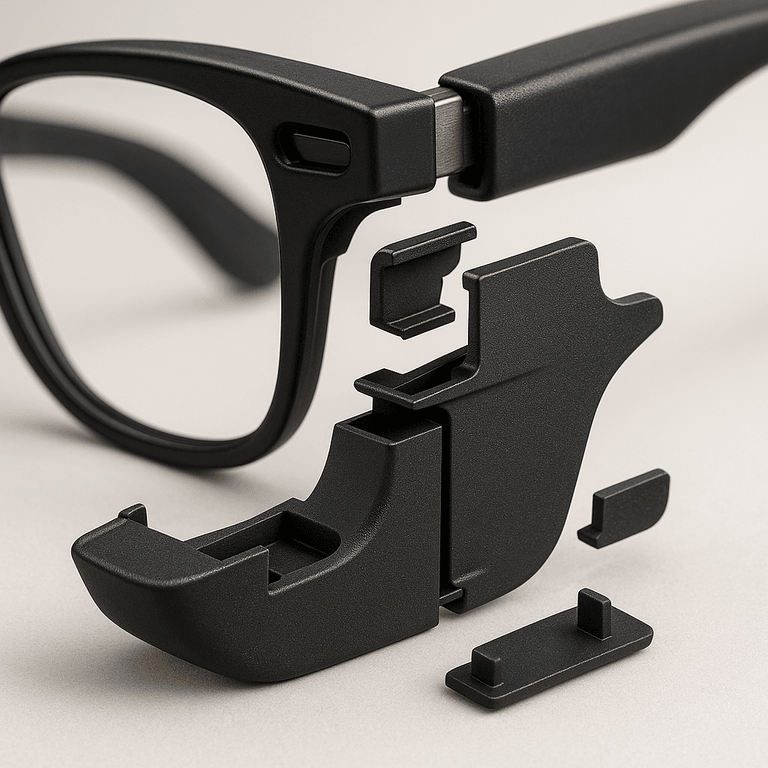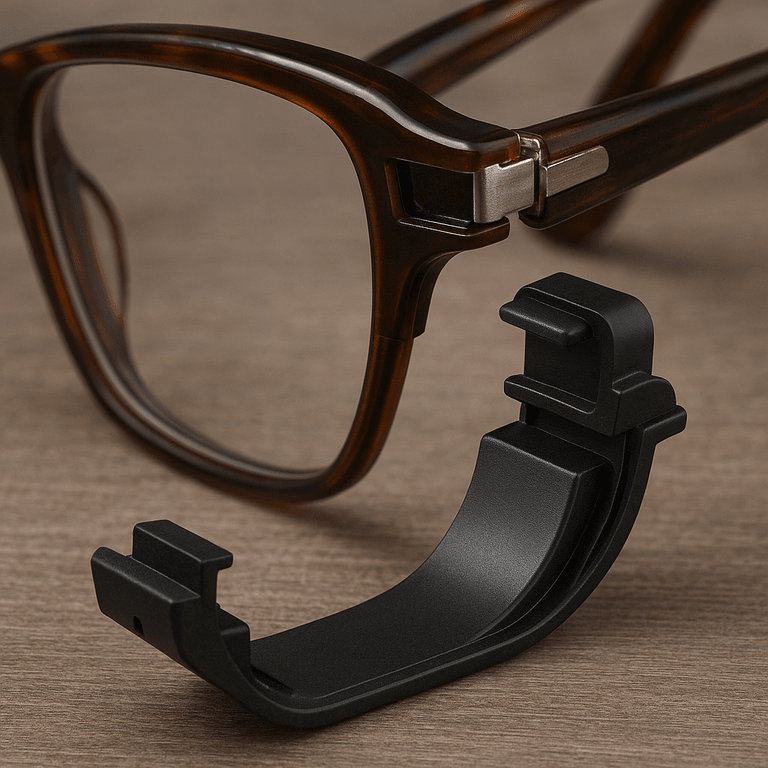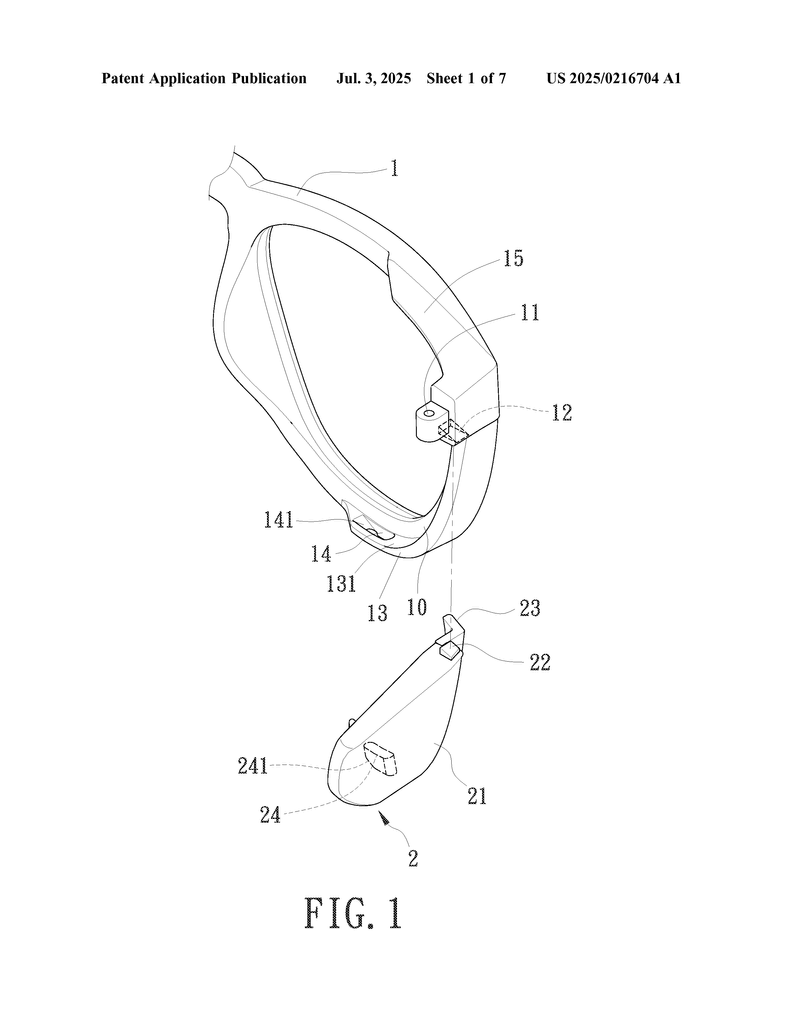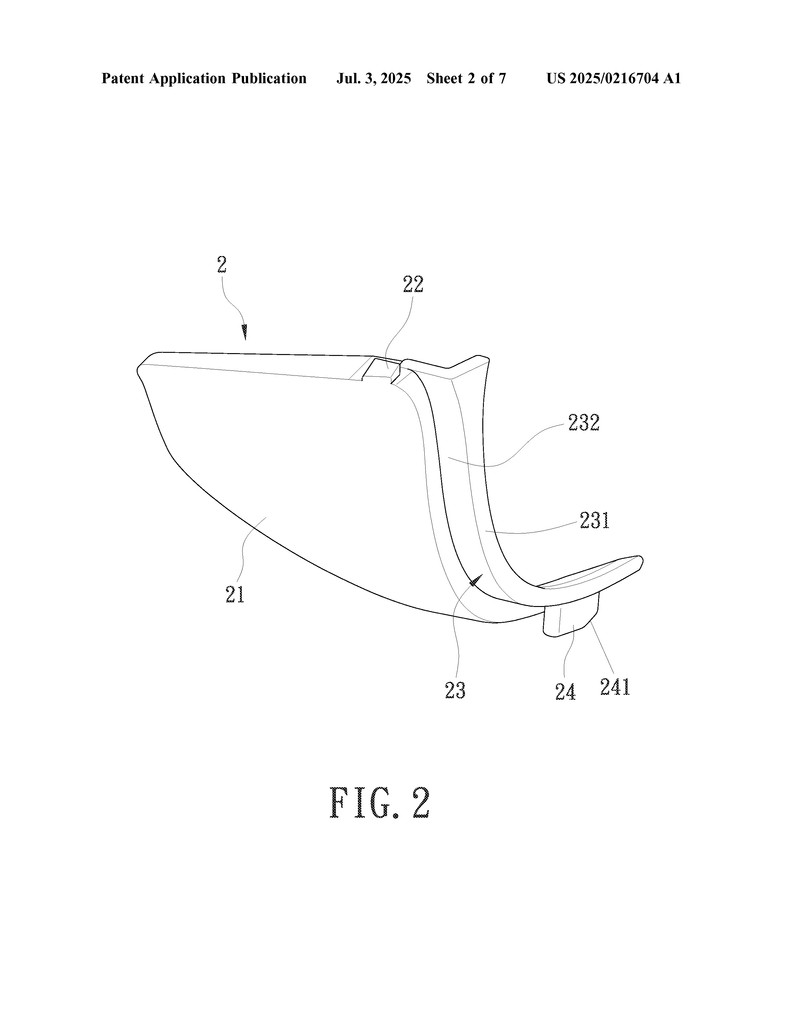Invented by CHEN; PEN-WEI
Eyeglasses are more than just tools for seeing better. They protect our eyes from the sun, dust, and other things that can harm us. A new patent application for a side cover assembly for glasses frames opens up new ways to make glasses safer and more comfortable. Let’s explore this invention and learn how it changes the way we think about eyewear.
Background and Market Context
People wear glasses for many reasons. Some need them to see clearly, while others use sunglasses to block sunlight. Sometimes, we need extra protection for our eyes, especially when we are outside, working, or playing sports. Dust, wind, and small objects can hurt our eyes, so side shields or covers are often added to glasses. These side covers help keep our eyes safe from things that come in from the sides.
Traditional glasses usually do not have side covers. If they do, the covers are often built into the frame, as seen in many goggles. These built-in covers give good protection but have some problems. If you do not like the style or want to change the covers, you cannot. They are part of the frame, so you are stuck with what you get. Also, goggles with big side covers can be hard to store. They take up more space and do not fold well.
Some glasses have removable side shields. These can be put on or taken off as needed. However, there is still a problem. Many removable shields connect to the temples (the arms of the glasses). When the shields are attached, you cannot fold the temples. This makes storing the glasses hard and can make them less comfortable to wear. If you keep taking the shields off and putting them back on, they can become loose. Over time, they might not fit well, leaving a gap where dust or wind can get through. Worse, they might even fall off.
People want glasses that are easy to use, comfortable, and safe. They want to protect their eyes from all angles but also keep the glasses easy to carry and store. There is a need for a better way to add side covers to glasses. The invention in this patent application aims to solve these problems. It gives us a new kind of side cover assembly that is easy to use, secure, and does not get in the way of folding the glasses.
The eyewear market is huge and always changing. New designs, better materials, and smarter features are always in demand. Safety is a big concern, especially for people who work in tough places or do a lot of outdoor activities. This invention fits perfectly in this space. It gives people more choices and makes glasses safer and more useful. By letting users add or remove side covers easily and securely, this new assembly could change the way many people use glasses every day.
Scientific Rationale and Prior Art
To understand why this new side cover assembly matters, we need to look at how glasses and side shields have been made before. For a long time, side covers were just part of the frame. They were made in one piece with the frame, especially in goggles for sports or work. This design gives good protection, but it is not flexible. You cannot change the covers, and they make the glasses bulky. Many people want more style choices or want something easier to carry. Built-in covers do not allow this.
Later, inventors tried making side shields that could be removed. These shields usually clip onto the temples of the glasses. This way, users can add or remove them as needed. While this was a step forward, it brought new problems. Most of these shields block the temples from folding. If you want to put your glasses in a case or your pocket, you have to take the shields off. This is not always easy, especially if you need to do it often. Over time, the shields and the connection points wear out. This makes the fit loose and the protection weaker.
Some designs tried to fix this by making the shields fit more tightly or by changing how they connect. However, most still attach to the temples and make folding hard. Others use flexible materials, but these can also wear out or not give enough protection. There are even shields that cover the whole side of the face, but these are usually big, heavy, and not very stylish. They are fine for some jobs, but most people do not want to wear them all day.
Another problem is that most side shields do not match the look of the glasses. They can look out of place, making the glasses less attractive. This is important because people wear glasses all the time, not just for safety. They want glasses that look good and feel good.
This new invention builds on what has been done before but takes a different approach. Instead of attaching the side cover to the temple, it connects to a special part of the frame under the temple. This means the temples can still fold, and the side cover stays in place. The way the cover attaches uses special shapes and surfaces that lock it in securely. It is also easy to put on or take off. This solves the problems of earlier designs. The cover is stable, does not wear out as quickly, and does not make the glasses bulky or hard to use.
By looking at what has been tried before and why those ideas did not work perfectly, we can see why this new assembly is different. It gives us a better way to protect our eyes from the side while keeping glasses easy to use and stylish. It is a new answer to an old problem, using smart design to make glasses better for everyone.
Invention Description and Key Innovations
This patent describes a unique side cover assembly for glasses frames. It is made to fit just under the temple, so the temples (arms) of the glasses can still fold as usual. The assembly has several parts that work together to make the side cover easy to attach, secure, and simple to take off when needed.
The main part is a special edge on the glasses frame, called the carrier edge portion. This edge sticks out a little from the frame, just below where the temple connects. The side cover unit is made to fit onto this carrier edge. The cover itself has a cover piece and a mounting flange. The flange is the part that fits snugly onto the carrier edge portion. This keeps the cover close to the frame and in the right place.
To make sure the cover stays put, there are locking pieces at the top and bottom. At the top, there is a locking bump—a small, slanted piece that fits into a matching recess in the frame. At the bottom, there is a locking block, which fits into a slot on the carrier edge portion. Both the bump and the block are shaped so they fit perfectly into their spots. The locking bump is like a slanted peg that goes into a slanted groove, and the locking block has slanted surfaces that match the slot. These shapes make sure the cover is held tight and does not wiggle or fall off.
The whole process of attaching the cover is quick and simple. You start by lining up the locking bump with the recess and pressing it in. Then, you rotate the cover down so the flange slides onto the carrier edge, and the locking block clicks into its slot. Once it is on, the cover is held in place by the shapes and surfaces of the frame and the cover itself. It does not block the folding of the temples, so you can still close your glasses as usual.
Taking the cover off is just as easy. You press the locking block upward to release it from the slot, then rotate the cover up and out. The locking bump comes free from the recess, and the cover comes off the frame. This simple movement makes it easy to add or remove the cover whenever you want. There is no need for tools or special skills.
The design also pays attention to comfort and style. The mounting flange and the curved loading surface of the carrier edge are shaped to fit together smoothly. This makes the cover feel like part of the frame, not just something stuck on the side. The cover can also have an upper piece that shields the top of the eyes, giving even more protection from sunlight or flying objects.
This invention stands out because it solves the problems of earlier designs. It keeps the cover secure without making the glasses bulky. It lets the temples fold as usual, so the glasses are still easy to store. The cover is easy to attach and remove, so users can change their glasses as needed. The shapes and surfaces are made to last, so the cover does not get loose or fall off over time.
For people who need extra eye protection, this side cover assembly is a game-changer. It is perfect for outdoor workers, cyclists, and anyone who wants to keep their eyes safe from dust, wind, and sunlight. It gives users more choices and makes glasses more useful every day. The simple, smart design means it can be used on many types of glasses, making it a flexible solution for many needs.
Conclusion
Eyewear has always been about more than just better vision. It’s about comfort, style, and keeping our eyes safe. The new side cover assembly for glasses frames brings a fresh solution to a common problem. It makes glasses safer without making them harder to use or carry. With its clever design, easy attachment, and secure fit, it could become a new standard for protective eyewear. For anyone who values both safety and convenience, this invention offers the best of both worlds. As glasses continue to evolve, this side cover assembly shows how smart ideas can make everyday products better for everyone.
Click here https://ppubs.uspto.gov/pubwebapp/ and search 20250216704.




